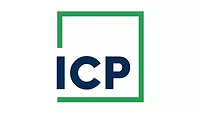Building Sand Castles That Endure

I am sitting on a tropical beach in St. Lucia, contemplating tomorrow’s long flight home, watching the relentless ebb and flow of the ocean as the waves crash on the shore. I look out to the very edge of the water where a tall sand castle, built just a few hours ago by my son and his friends, is beginning to crumble and fall to the might of the sea. In just a few hours, there will be no trace that a sand castle ever stood here; as the high tide comes in, all evidence of the children’s hard effort and exertion will be washed away.
As I stare out at the horizon, my practical mind kicks into gear. “Why didn’t they just build the sand castle another twenty feet inland?” I wonder. “It would have been above the high-tide mark, and then it would have lasted much longer.” As I voice these thoughts aloud to my wife sitting next to me, she jumps in with the possibilities. “Perhaps the kids didn’t know where the high-tide mark was,” she offers. “Or maybe they just didn’t care because they won’t be here tomorrow to see whether the sand castle survived or not.”
Immediately, my mind jumps from building sand castles to the parallels in leadership – specifically, the importance of knowledge and the consequence of caring. As a leader, it’s important to equip yourself with knowledge, not only about your people and their circumstances, but also about the skills and behaviors you can develop within yourself to create leadership excellence. As a leader, it’s vital that you care both about your people and the impact of your words and actions on others. Just like improved knowledge and greater caring could have built a more enduring sand castle, your investment in knowledge and your commitment to caring will build not only strong employees and teams capable of resisting outside forces, but also positive workplaces that endure.
As you construct your company, you should be aware of the forces that serve to tear down the foundations of your business. Building your castle in the sand is not necessarily an effective strategy; however, using this analogy serves as a great business lesson. Building sandcastles can be compared to constructing a company on a strong foundation and creating a company that endures for not only the next day but for generations to come.
Henry David Thoreau says that you can build castles in the sky, and Jesus says to build your house on a rock. It is important to build on a solid foundation that can survive a rising and shifting tide. The world of restoration is changing, and it is the job of the owner to build above the high tide and create a lasting structure. Whether building in the air or on a rock you will have to construct a strong foundation and this foundation has several key building blocks. The cornerstones of a strong foundation are leadership, accountability, and proactive management.
A strong leader is central to an effective organization. Most successful companies are created through strong leadership. The leader sets the tone and example for the entire company. Two important components of a leader are a compelling vision and positive reinforcement. People working in your organization want to be a part of a company going somewhere. Chasing a vision drives performance and takes your company to the next level. Positive reinforcement is effectively used by a leader to draw out exceptional performance from the entire staff. Many leaders are notoriously poor at handing out compliments; rather, they look at the things that are not going right and focus on the weaknesses of the individuals working in the company. The unexpected impact of this trait is that it does help people improve on weaknesses, and rarely allows those individuals or the company to take chances or leverage their strengths.
Your role is to liberate the potential of your staff, and this is accomplished through leveraging the things that people do well and assist them to fulfill their potential. Every day you need to make a conscious effort at distributing more praise than criticism, and then focus effort on exploiting opportunities in your organization. Become the visible leader in your company and keep the corporate vision at the forefront of the organization. Some are born leaders and others develop the skills through the heat of the battle. In any event there are numerous books on leadership that will hone your skills. Become a student of leadership, understanding that this is one of the cornerstones of your company.
Perhaps the most elusive structural organizational issue is accountability. There are a lot of components to accountability, but it starts with communication and identifying organizational objectives and benchmarks. Many companies find accountability to be such a difficult concept because they are not able to identify clear and objective expectations. The lack of this information makes most decisions appear to be arbitrary or subjective. When you have created your organizational plan, identified key objectives and communicated individual expectations, only then can you implement accountability in your organization. Accountability is often seen as a consequence for lack of performance. If you only look at the negative side of accountability then you are missing a great opportunity to recognize and reward the desired performance. Using positive reinforcement will yield much greater results than emphasizing and correcting negative performance.
That being said, too many companies tolerate less-than-acceptable results. This goes a long way in defining company culture. A company culture that defines and expects excellence will achieve excellence. One that tolerates less will often achieve mediocrity. Your goal as a leader should be to define exceptional performance and reward achievement. When the desired level is not achieved, you should immediately coach the individual or team to improve performance and set benchmarks along the way. If at this point you are not seeing progress and effort toward improvement, you need to have consequences that are in line with the expectations in your company handbook and company policy. Every individual should be given the same opportunity and consequences so it appears that you are being fair to all involved. Maintaining poor performers in your organization brings down the performance of your entire staff and enables the bad habits and skills that led to the performance in the first place. Accountability is about establishing standards of performance and then communicating progress to the individuals in your company. Define and communicate standards of excellence and watch your company excel.
The final essential building block is proactive management. Proactive management revolves around a culture of purpose. Too many companies are reactive and do not obtain the synergies that are created when your staff is working on aligned goals. The result is that you and your staff become victims of the urgent and spend time majoring in minor issues and inefficiently responding to stimuli. When you have aligned goals, a compelling vision and a clear purpose, you experience the synergistic effects of an empowered workforce. You now get to choose your priorities and spend organizational resources on important items that are fundamental to goal achievement. Take the time to create a solid plan and realize that your job is to focus the resources of the company on goal achievement and plan implementation. When you are faced with decisions about training, equipment purchases, marketing and staffing, you will have a guideline to make strategic, rather than arbitrary, business decisions. Imagine the impact of your team spending their time proactively accomplishing goals rather than reactively responding to situations. A solid plan and proactive goals will prevent the owner from making mundane and arbitrary decisions and becoming the funnel for all activity in your company. Make time every year to update your business plan and revisit that plan routinely throughout the year to assure you are accountable to the details. The details of the plan will include other fundamental management items such as goals, vision, budgeting and other tools that will allow you to become an effective organization.
When you take a critical look at your organization, are you like my son and building a sand castle below the high tide mark, or are you building on a solid foundation? Thoreau did say that it is acceptable to build a castle in the sky; however, he also said you need to work to build a foundation under your castle. In a similar fashion it is my recommendation that you look at the cornerstones in your organization and check to assure they are solid. Then you can address growth and building your structure on that foundation.
Looking for a reprint of this article?
From high-res PDFs to custom plaques, order your copy today!







